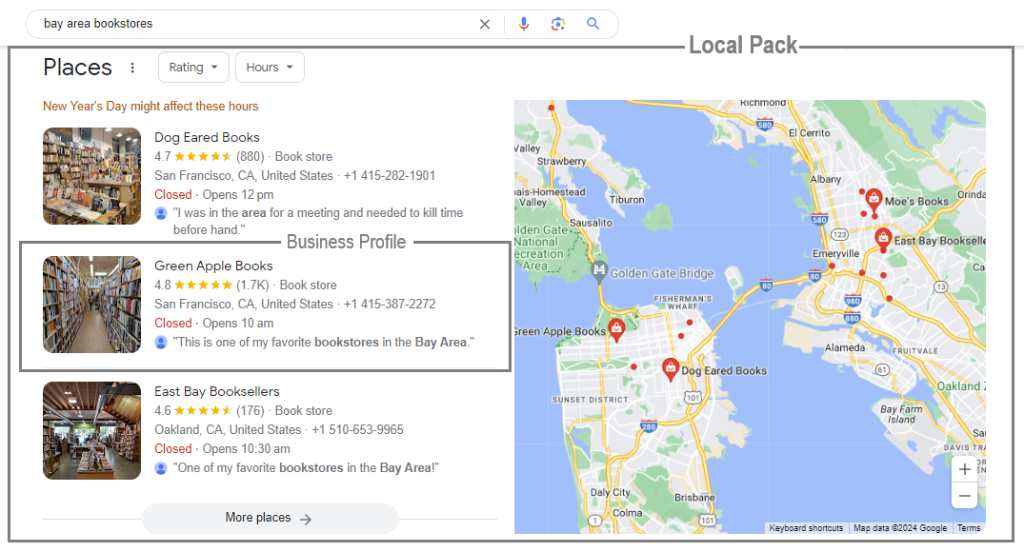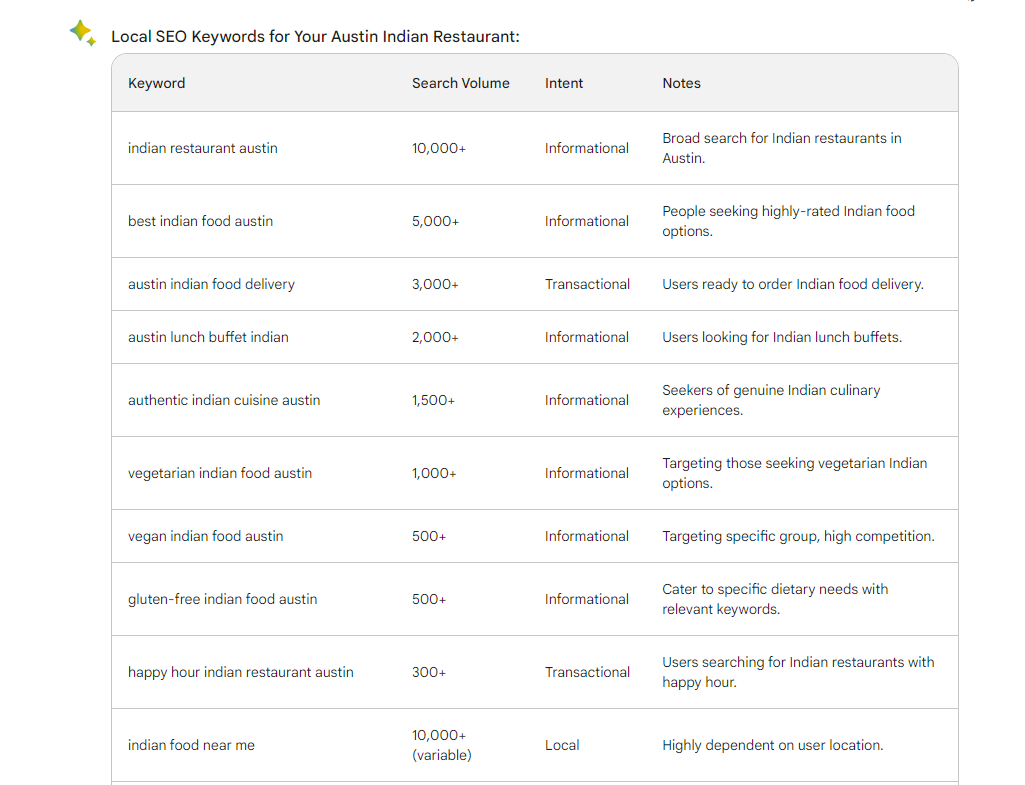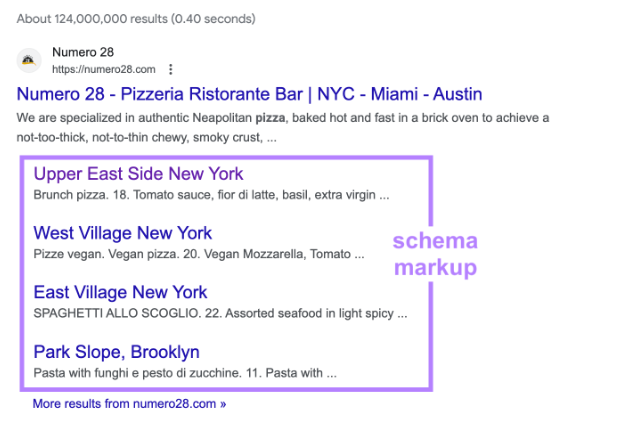Welcome to our Local SEO Guide! This is dedicated to the millions of small businesses and entrepreneurs driving our economy and communities.
Imagine living in a community without bakeries, bookstores, restaurants, car washes, or barber shops. Exactly, it’s not a place anyone desires.
Yet, in today’s digital age, having a charming brick-and-mortar presence isn’t sufficient. You need to be visible in searches to attract customers who may not stumble upon your side street. This is where Local SEO becomes your ally.
This local SEO guide is crafted to help small businesses gain more visibility and attract customers online.
Table of Content
- Here’s Your Local SEO Guide!
- 1. Optimize Your Google Business Profile
- 2. Leverage Relevant Local Directories
- 3. Conduct Local Keyword Research
- 4. Invest in Local Content Marketing
- 5. Do Some Local Link Building
- 6. Optimize for Mobile Search
- 7. Manage Your Reputation
- 8. Invest in Community and CS
- 9. Optimize Your Site Structure
- 10. Monitor. Iterate. Improve
Why Invest in Local SEO for Your Business?
Let’s talk data!
These statistics from credible sources illuminate the immense power of optimizing your online presence for local reach.
- 46% of all Google searches have local intent.
- 88% of consumers who do a local search visit or call a store within a day.
- Local SEO leads have a nearly 15% close rate.
- 64% of small businesses have a local SEO presence.
- 24.4% of all clicks go to the first result of local business searches.
- 79% of SEO leads come from organic search.
- 87% of consumers use Google to evaluate local businesses.
(For more, check this and this source.)
These statistics paint a clear picture: Local SEO is more than just a digital trend; it’s a powerful tool for attracting customers, generating leads, and growing your local business.
It’s about optimizing your online presence (think website, social media, and the magical world of Google) to show up when people in your area search for businesses like yours.
But wait, you may be thinking, “I’m not a tech whiz! Is local SEO some complicated code monster I need to tame?”
Absolutely Not!
Local SEO is about taking baby steps, like following a simple recipe to bake a masterpiece.
Here’s Your Local SEO Guide!
While many brands and local store owners opt for agencies to navigate marketing and local SEO, fear not! Doing it yourself is not as scary as it may seem.
Follow this short and baby-step local SEO guide to help optimize your local business without hiring an agency.
1. Optimize Your Google Business Profile
This is your free online business profile. You can use it to turn random visitors into paying customers, but it requires optimization and personalization with info, photos, offers, posts, and more.
Look at the following local pack and business profiles for the search term “bookstores in Bay Area.”

Google business profile optimization is the first step in local SEO.
The initial move towards optimizing your GBP is to either create or claim it. You cannot make any changes or additions if you do not have verified ownership of the listing.
Fortunately, the process of creating or claiming a Google business profile is straightforward. For a detailed walkthrough, refer to the video below.
A well-optimized GBP profile has a detailed business description, clearly defined services, operating hours, contact information, social links, and beautiful pictures of the facility or stores.
Moreover, if you want customers to reach you in real-time, you can also enable ‘messaging.’ But remember that if you don’t respond to queries within 24 hours, Google may remove the feature from your profile.
Also, when writing your business description, ensure the copy is well-optimized for your services’ keywords. Your product/services section should also contain important buzzwords that people use to search for the product or service alongside the area’s name.
Take a look at this short example.
“Green Apple Books is one of the leading bookstores in the Bay Area, offering a wide range of fiction and non-fiction, new and old books.“
2. Leverage Relevant Local Directories
While your Google Business Profile is key, listing your business on other credible directories like Yelp and Yellow Pages boosts your online presence. Each listing not only amplifies credibility but also establishes trustworthiness with search engines, leading to increased visibility.
However, be very careful while choosing a business listing because there are too many spam websites, and their backlink or signals may backfire.
If you want to invest, there are many local business listing management platforms, and they can seamlessly list your profile across many websites. But even if you don’t have that kind of budget right now, that’s not a deal breaker.
3. Conduct Local Keyword Research
As noted in the Google Business Profile section, searching for localized keywords is very important. These are the words that potential customers use while searching for products and services in the neighborhood.
If you are a bit savvy, tools like Google Keyword Planner can assist in identifying the most sought-after queries within your niche.
However, if you don’t have access to those tools, don’t consider it a deal breaker. You still have three options:
First Option: List your brand name and core services and combine them with your location.
For example, if you are an Indian restaurant in Austin, you would know what people usually search for. Think of terms like Indian restaurant in Austin, Indian restaurant near me, best Indian restaurant near me, best biryani in Austin, etc.
Second Option: Conduct a little bit of research on Google. Explore the keywords your competitors and other businesses in the niche are doing. Another key help could be the “related searches” section in Google, which should give hints about what keyword combinations people use.
Third Option: The third option is to put GenAI to use for keyword research. A solid prompt on ChatGPT, Bard, or Bing Copilot could be invaluable and bring in some cool local SEO keywords for your business.
Look at the following list that I just generated with the help of Bard — it was extensive, spanning various categories, and I had to trim it down.
This is a goldmine for a local business on a budget, providing the keywords, their search volume, intent, and useful notes.
Remember, regardless of your chosen option, the goal is to incorporate these localized keywords into your content, meta tags, and other relevant areas.

4. Invest in Local Content Marketing
This is no secret that some businesses dominate the search while others fail and operate more like ghosts. The critical difference lies in the strategic creation and distribution of keyword-focused content.
Content is the King of marketing and SEO; no local SEO guide will be complete without talking about content marketing.
As we have covered above, when people search for local businesses, they often use specific keywords coupled with their location. If these keywords are in your blogs, posts, and videos, they will show up in search results. Refer to the Indian restaurant example we covered above.
Once you have keyword research done, there are a few action items.
First, ensure your business description and related information cover relevant keywords.
Whether your website or Google Business Profile, pay special attention to the product/service descriptions and give their detailed overview. Try to accommodate relevant and high-intent keywords without stuffing them. Remember, relevance is the key to success here.
Second, invest in locally relevant content. Create and distribute content that could help search engines determine your exact location and the queries you can entertain as a business.
Create blogs, news stories, and how-to guides on the topic of interest to your community and target audiences. Search engines see this passion for your community and link you to relevant searches.
5. Do Some Local Link Building
This may sound intimidating to many, but trust me, it’s not complicated. In fact, this entire local SEO guide is meant to make it a DIY exercise.
Link building is a kind of partnership between two entities where the publisher posts content about something relevant to the partner and adds a link pointing to their website.
For example, a TechCrunch article reviewing the latest iPhone and giving a link back to Apple’s website guiding people to it for more info.
Here again, relevance is the key. Make sure you are getting backlinks from relevant and authoritative websites. Partnering with publishers with low DA (domain authority) or high spam scores could be counterproductive.
How do you go about this?
Look around for local prospects and potential publishers you could contact and ask for a backlink. Put your network to use!
6. Optimize for Mobile Search
Most of the local searches happen on mobile. With Google’s preference for mobile websites for indexing and ranking, it is imperative that you optimize your website for responsiveness.
There are many small steps to achieve this.
Start by using a responsive web design, which means that your web design and content adjusts to fit the screen size of any device.
To check your website’s functional or responsiveness issues, go to Google’s Pagespeed and mobile-friendliness checker. These free-to-access tools will guide you on what needs to be fixed.
While a lot can be done by yourself, if there is any major issue, a freelancer from UpWork or Fiverr should do it for a few bucks.
In addition to this, your website’s meta descriptions, titles, and images should be optimized for search and mobile.
If you aren’t familiar, a title is the clickable blue text in the search results, and a meta description is a brief text that appears beneath titles.
Lastly, if you are a pro at using Google Search Console, it can offer additional ideas in the “Mobile Usability” section. I am leaving it here to avoid unnecessary complexity.
7. Manage Your Reputation
Online reputation management is a critical part of local SEO and marketing. Public recommendations, reviews, and complaints lead to positive or negative word-of-mouth marketing, which is, by far, the most powerful form of marketing.
There are many aspects of reputation management.
Google gives due weightage to reviews, and they influence search rankings and your business reputation.
The simple rule is to keep track of your brand’s mentions and reviews. Encourage happy customers to leave a positive review and five stars on your business profiles, publicly thank them.
Similarly, engage with negative comments in a constructive manner. Seek feedback and intelligence on the issue and ensure its resolution. Engaging with unhappy customers and public assurance on the resolution often leads to empathy and positive comments in the future.
Here are some tips when engaging with reviewers.
- Respond timely — Aim to respond within 24 hours of the review. It’ll show other people that you are serious about your brand reputation.
- Keep it professional — A review is valuable business feedback, whether supportive or critical. Hence, make sure you keep your response courteous and professional. Always personalize!
- Offer a Solution — If there is a complaint, apologize for the inconvenience, look into it, and offer a solution or compensation, whatever is appropriate. Lastly, keep track of the conversations and follow up for additional questions.
8. Invest in Community and CS
Another aspect of reputation management is social media and community building. Community building isn’t just for the bigger brands. Local businesses can thrive and build a sustainable growth foundation if they succeed in building a community of loyal customers.
How to go about it?
Get social, folks! Facebook, Instagram, Twitter – they’re the digital town square where you can connect with your community. Share local tips, host online contests, and offer exclusive deals to your social media followers. Google takes notice of businesses that actively engage with their community.
Another aspect of community building is the concept of ‘social media customer service’. Local businesses that invest in social media customer service thrive and succeed as compared to the ones who take social for granted.
Proactive and smart customer service will lead to active online participation and positive word-of-mouth marketing, which will build your credibility and reputation as a customer-friendly business.
Reviews, comments, messages, calls, and texts from social media portals are valuable business intelligence and feedback. Moreover, search engines treat social signals as a key ranking factor and pass on the visibility to engaging brands.
9. Optimize Your Site Structure
I deliberately kept it in the last as it may sound a bit overwhelming to many, but trust me, there are just a couple of things to pay attention to.
One, if you have a bigger website that covers quite a few locations, consider creating local landing pages. Let’s say you offer services in three cities, then, each city should have its own dedicated landing page.
This is simply common sense because each location will have different keyword combinations and must be optimized accordingly.
The second is to deploy Schema markup. It is another form of structured data that informs search engines about your web pages and helps in local SEO for your small business.
The most obvious option for you will be ‘local business schema’ as it’ll allow you to add specific information about your business within.

Just make sure you’ve consistent and accurate addresses, operating hours, and contact information across all pages of the website. If implemented properly, this data will appear in search results and make you more noticeable.
10. Monitor. Iterate. Improve
This is the last part of your DIY local SEO guide.
SEO isn’t a magic spell that works overnight. It’s not a sprint, but definitely a marathon. Monitoring your progress and keeping track of your key statistics is vital for success.
Even if you do not have paid tools like SEMRush or Ahrefs, you can still get a fair picture of your visibility through Google Search Console, Google Analytics, and Google My Business data.
Keep a list of your desired keywords (which you’ve accommodated in content) and keep a manual track of them on local search. Check these rankings every two to four weeks and see if any improvement or decline.
Modern marketing thrives on data and business intelligence. Look at what the data is telling you, and then adjust your approach accordingly.
Be patient, be consistent, and most importantly, have fun! Experiment with different tips, track your progress and celebrate your wins. Remember, every little step, every engaging social media post, and every helpful blog post you write is leading your business to online success.
Lastly, I have tried to make this local SEO guide as simple as possible, and hopefully, you’ll be able to do things yourself. However, if you face any issues or there is any concept that I couldn’t explain better, feel free to drop me a message, and I’ll be happy to offer the maximum help possible.
Thanks for reading!
If you enjoyed this piece, do share it with your friends and network, and help them tackle their local SEO challenges as well.
